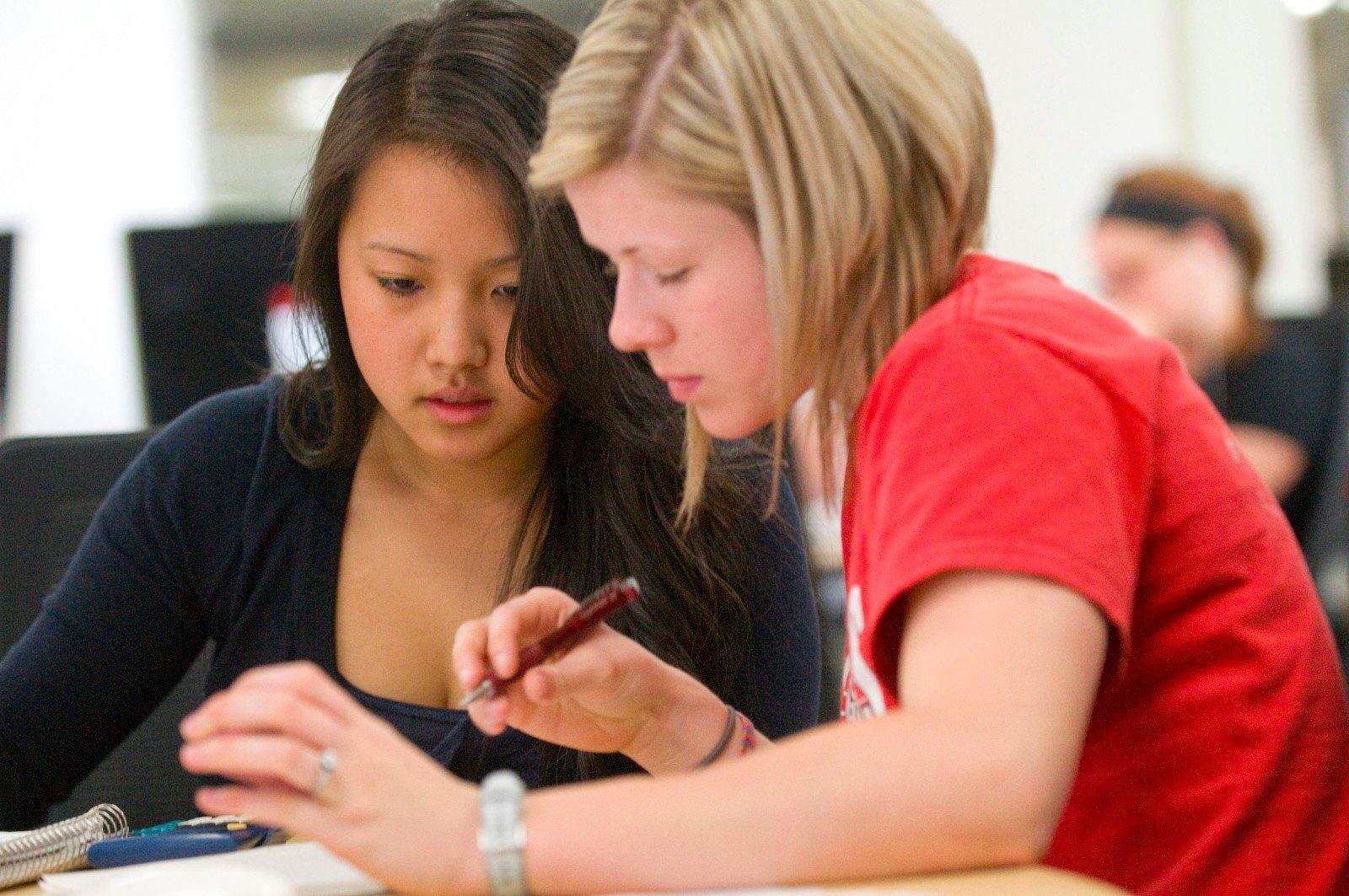 Before we initiated tutor training in our programs in the Learning Commons, it was common for peer assistants to do more explaining and less asking. Nowadays, questions increasingly play a major role in our peer assistance sessions. While our trained peer assistants may know by heart that the role of the tutor is to facilitate students’ development of active and self-regulated learning in a higher education setting, making the shift to deploying more questions takes time, observations, and debriefing. Our peer assistants are learning more than ever through their experience and training that inquiry can uncover the ways students think and the gaps in student learning.
Before we initiated tutor training in our programs in the Learning Commons, it was common for peer assistants to do more explaining and less asking. Nowadays, questions increasingly play a major role in our peer assistance sessions. While our trained peer assistants may know by heart that the role of the tutor is to facilitate students’ development of active and self-regulated learning in a higher education setting, making the shift to deploying more questions takes time, observations, and debriefing. Our peer assistants are learning more than ever through their experience and training that inquiry can uncover the ways students think and the gaps in student learning.
One framework in this year’s training for using questions has been the “6PQ Method of Discovery Learning” (Tracy & Showers, 1986). The approach involves six phases, each of which includes a variety of questions that engage students’ recall of material, thinking, and the uncovering of misconceptions. The process also involves revisiting notes and materials, the tutor paraphrasing the students’ thinking, and the student paraphrasing the key takeaways of the whole session. This model may be useful to faculty in our office hours and with individuals and groups while teaching. Below is an outline of the method with sample questions that we use in tutor training:
1) Preface (Identifying the issues)
- “What is it exactly that I can help you with?”
- “What are you having trouble with?”
- “In what way can I help you?”
- Paraphrase what you heard the issues to be.
2) Pace (Caution! Take your time here.)
- “What can you tell me about ______________ now?”
- “What have you read about? What did the professor say about it in class?”
- Paraphrase
3) Probe (Spend most of your time here)
- “Why? Can you give me reasons?”
- “What makes you think so?”
- “Would you tell me more about ______________? Can you give me an example?”
- Paraphrase
4) Prod (Implications & consequences)
- “If you had to guess the impact of X on Y, what would you say?”
- “I understand that you don’t know, but what do you think it could be?”
- “What is your gut instinct? Why would that be true?”
- Paraphrase
5) Prompt (For dealing with uncertainty)
“You told me earlier that ______________, so how could ______________?”
- “Would it be ______________ or ______________?”
- “What is the first step in this process? Second step? Third step?”
- Paraphrase
6) Process (Connecting to other concepts)
- “Now that you understand this concept, how would you compare it to another concept?”
- “How do you see this concept fitting into the entire course?”
- “So, now, what can you tell me about______________?”
- Now have the student paraphrase the highlights of the whole session.
We can naturally substitute questions that fit the context at hand and one is not bound to this exact sequence. The key is to use questions that move through elements of Bloom’s Taxonomy (from identifying and explaining to applying, analyzing, and making connections to other concepts).
Sometimes students struggle to answer initial questions, but even here, we can use questions to direct students to resources (“Where in your book or notes might you find this out?”) and to support methods of retaining and recalling information (“What methods might you use to remember these concepts?”).
The 6PQ Method for Discovery Learning falls under the rubric of critical thinking approaches in teaching and tutoring alongside, for example, Socratic questioning. In our many interactions with students, whether in class or during office hours, we can intentionally use a variety of questions to further cognitive processing, learning, and critical thinking. As we move from explaining to questioning, we let students make their thinking visible to us, and from there, the deeper learning can truly begin.
Jeffrey White is an instructor of German and the Learning Commons administrator in Buckley Center 163. He can be contacted at white@up.edu.
Featured Image: Students Collaborating by Greg Anderson Photography used via CC 2.0
